
Smart Mobility and Sensor Based-BRT Crusade, the Challenge for Auto Mechanics and Technicians in Africa
Mechanical Engineering Energy SystemsAutomation and Control Systems受け取った 27 Mar 2024 受け入れられた 13 Jun 2024 オンラインで公開された 14 Jun 2024
Focusing on Biology, Medicine and Engineering ISSN: 2995-8067 | Quick Google Scholar
Next Full Text
Potentially Toxic Metals in Cucumber Cucumis sativus Collected from Peninsular Malaysia: A Human Health Risk Assessment


受け取った 27 Mar 2024 受け入れられた 13 Jun 2024 オンラインで公開された 14 Jun 2024
African countries with no globally recognized auto manufacturing factories are flooded with the most modern automobiles as soon as they are commercialized in the absence of commensurate skilled local auto mechanics across the continent. In the wake of the Bus Rapid Transit (BRT) scheme in Abuja Nigeria, the first set of luxurious buses purchased ended up as junks within a short period of operation largely due to lack of technician competency. The continuous patronage of a few multinational workshop garages like Toyota, Honda, Kia Motors, etc is hindering the transport agencies from breaking even. This paper is therefore aimed at evaluating the state of bus auto-mechanics and technicians in Nigeria for sustainable hybrid buses for effective BRT in the country. Google search engine was used to source secondary data from dedicated transport and energy-related sites like National Research Council (NRC) Agora Verkehrswende and GIZ, Smart city study, USDoT, and Africa Transport Solution, for the current paradigm shift in automobile energy management. Participatory surveys were carried out in two major motor mechanic villages that house over two hundred (200) workshops. The study reveals that there is a yawning gap between the societal ideal auto-mechanic expectations and the operational woe realities. This work becomes very relevant in view of global urbanization and the crusade for Hybrid Bus Rapid Transit (HBRT) in urban mobility as a panacea to COP28 carbon emission reduction. It is recommended that policymakers in urban transportation at all levels should ensure the certification and re-training of the motor mechanics to be able to maintain those imported modern buses while investing in ITS-based road infrastructure for sustainable BRT in their country
Urban heat waves and urban islands are related environmental phenomena orchestrated by global climate change that are believed to be more anthropogenic activities than natural variability []. The world urban population is expected to grow by more than a billion people between 2010 and 2025 at the expense of rural areas []. Epidemiological studies have revealed a close relationship between global warming and urban health challenges like water-born, vector-born, and food insecurity []. Human industrial and automobile activities that depend on fossil fuels generate about 21.3 gigatones of carbon dioxide yearly, of which nature can only sequestrate half leaving about 10.65 gigatonnes floating in the atmosphere. That climate change is a reality is no longer news, but that the changes will be continuous and sporadic even in their normal variability leading to extreme heat waves as in Europe in 2003 and the US in 2006 is traumatic [-]. Already, the Arctic and Antarctic ice cover are melting leading to global sea rise and tsunami as in the case of New Orleans and Philippine-Asia floods.
The spirit of personal car ownership and neglect of mass transit systems in many urban centres have exacerbated the urban gridlock as revealed in Figure 1. In fact, the need to improve human health and reduce transport externalities has led to the formation of the European Commission’s White Paper on Transport “European Transport Policy for 2010: time to decide” [,].
The omnibus and multidirectional flow of urban traffic that tends to generate about one-third of global CO2 hinders the capturing of individual vehicle emissions; hence the only effective mitigation method will be the replacement of the old vehicles with modern hybrid, zero-carbon vehicles as demonstrated in the USA energy Policy Act of 2005. It is a government transport policy effort to commercialize hydrogen fuel cell vehicles (HFCVs) []. Nigeria like other African countries is an automobile consumer without adequate policy on technology adoption since there is nothing like technology transfer globally. African countries like Nigeria a signatories to the global stocktake on decarbonisation Global Goal on Adaptation (GGA), this work therefore becomes very relevant in view of the global crusade on Hybrid Bus Rapid Transit (HBRT) in urban mobility as a panacea to COP28 carbon emission reduction. The sustainability of modern vehicle operations like hybrid BRT in these countries will require conscious effort in developing the capacity and certification of the auto-mechanic small and medium enterprises (SMEs).
Trend in the automobile design and development: Based on the Google search engine result, automobile development over the ages has gone through a lot of transformation from the toy steam-powered engine by Fedinand Verbiest in the year 1672 through Wiliam Morduch who built a working model in 1784, and Richard Trevithich who also ran a full-sized vehicle at Camborne in 1811 to the self-propelled steam vehicle that conveys people and cargo by Nicolas-Joseph Cugnot in late 18th century. The first oil-fired steam car was built by Joself Bozek in 1815 at Prague Polytechnic, while in 1867; Henry Seth Taylor demonstrated his 4-wheel steam buggy in Quebec. Amédée Bollée was the first to produce what can be referred to as a real automobile in 1873, while the 4-stroke (gasoline) internal combustion engine was built by Nikolaus Otto and Rudolf Diesel 19th century before the petrol engine. In fact, the first motor car in central Europe was built by Nesselsdorfer Wagenbau in 1897 which was later renamed Tatra. Bollée was the first to conceive an electric ignition system in 1873 but was perfected by Robert Bosch in 1903 while the four-wheel brake was addressed by Arrol-Johnston Company of Scotland in 1909 [].
Smart City generally refers to cities whose critical infrastructure, utilities, and functionality hinge on IT for efficient interaction, and where investment in human and social capital actively promotes a sustainable economy and high levels of human development through participatory governance [-]. Smart Economy or Smart Industry on the other hand refers to e-production processes that attract and retain creativity and innovative talents. The theory and concept of ‘Smart City’ hinges on the telecom technological advancement incorporating the following six (6) key sectors of the built environment: Economy, Mobility, Citizenship, Environment, Management, and life quality.
Hybrid buses and Smart City technology within the Intelligent Transport System (ITS) is the adaptation of communication and information technology to transportation infrastructure systems for efficiency and environmentally friendly [-]. ITS has proven to be a tool in addressing the hitherto challenges in traffic flow management at all levels as it encompasses the use of telecom and sensors on the modes and means of transportation in the following areas:
2. Alterations in the service delivery efficiency in the areas of safety, speed, and reliability of transportation.
Modern-era automobiles have changed in power motive and from back axle to front wheel with lighter weight and shapes. The standardization of modern vehicles with computer-aided design of the present day V2V/V2X autonomous vehicles has increased the proliferation of all-wheel drives as against the ubiquitous fuel caperator to the injector and brain-box system, transversely position engine to the lateral cross position since the 70s.
Transformation of vehicles in terms of body shape and lighting system has been very significant over the years, particularly in Toyota products with hatchback, sedan, and sport utility series, high-powered luxury crossover SUVs, sports wagon, two-volume Large MPV that now dominate today’s automobile market. Thus, given the rate of technological advancement in the automobile industry over the years globally, there is much need for automobile technicians and allied artesian in developing countries like Nigeria to keep pace with the global best practices in motor repairs if African countries will continue to maximize the benefits inherent in modern day vehicles [].
Aim and objectives of the study: This paper aims to evaluate the state of auto-mechanics and technicians in Nigeria for sustainable hybrid buses for effective BRT urban mobility in the country. This is to be achieved through the following objectives:
This paper adopted both the Google search engine and field survey of selected major auto mechanics in Minna and reports of other researchers in the evaluation of the operation of the Small and Medium Entrepreneur mechanics that dot Nigeria cities and towns. Secondary data from dedicated transport and energy-related sites like National Research Council (NRC) Agora Verkehrswende and GIZ, Smart City study, USDoT, and Africa Transport Solution, etc were reviewed for the current paradigm shift in automobile energy management [-]. Participatory surveys were carried out in two major motor mechanic villages that house over two hundred (200) workshops based on the following parameters:
Bus Rapid Transit (BRT) is a compound term consisting of technological innovations in bus service delivery along designated routes or road corridors. BRT comes in different packages that are easily adapted to emerging technology to improve service delivery. For instance, the National Bus Rapid Transit Institute in its 2009 handbook ‘Characteristics of Bus Rapid Transit for Decision-Making’, recognises about seven components of BRT that are on continuous improvement as follows:
Advanced public transport system as a component of ITS is part of the continuous innovation in BRT toward improving general service delivery and optimization of the entire system [,]. Below are some of the adaptations of the technologies:
Hybrid buses were invented to ameliorate the hitherto vehicular emission problems and for more fuel efficiency usage. They are generally noiseless with a host of inbuilt safety sensors like ProTran Safe Turn Alert”, to enhance customers’ satisfaction and e-management system. For instance, the Chicago Transport Authority (CTA) has benefited greatly from the fleet of their Hybrid diesel-electric buses (model DE60LFR) as it helps in information dissemination in real-time the agency has been able to respond to issues as at when due, monitor and improve fuel efficiency, carried out preventive management system as against reactive Philippe [].
Also, the hybrid hydrogen fuel cell buses developed by ATP and Vossloh Kiepe are a major breakthrough in the public transportation system as they only emit steam as evidenced in their use in Amsterdam and Cologne. In fact, the new 7900 Hybrid Articulated model with a high capacity of about 154 passengers, offers fuel-saving efficiency of up to 30% compared to a 2-axle Volvo hybrid bus, Figure 3 for the comparative efficiency.
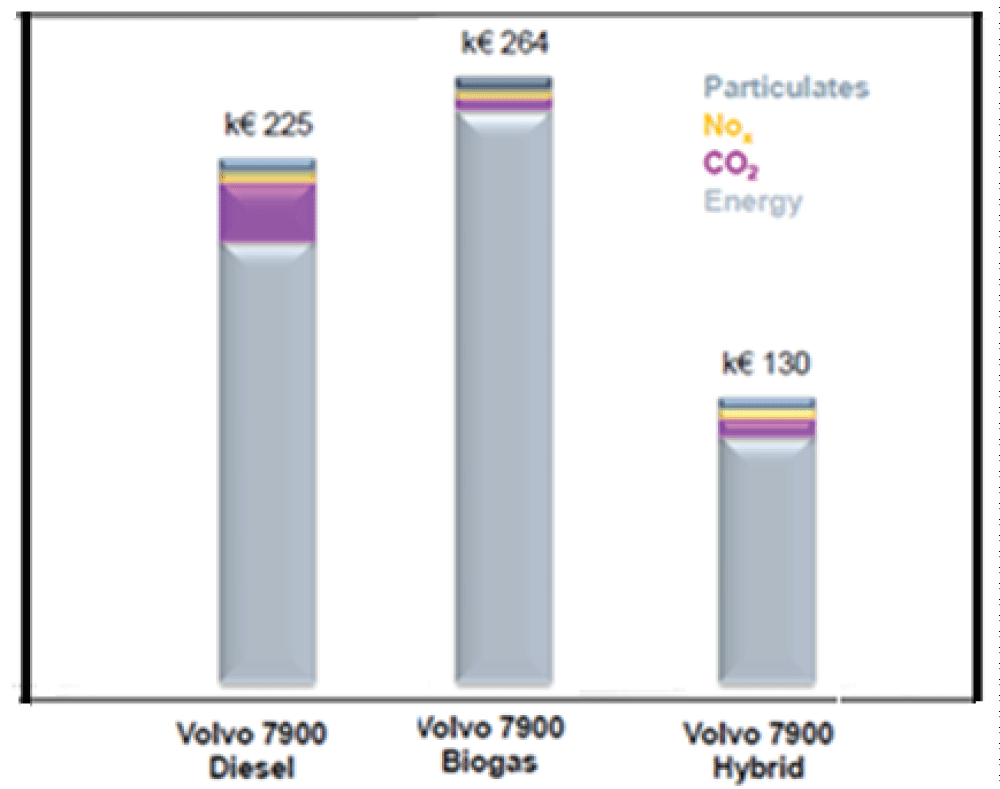 15]." /> Figure 3: Comparison of high-capacity buses in relation to environmental friendliness and energy consumption. Source: Volvo BRT [].
15]." /> Figure 3: Comparison of high-capacity buses in relation to environmental friendliness and energy consumption. Source: Volvo BRT [].The plug-in hybrid model is very noiseless and efficient in sensitive serene areas of the cities as the availability of charging stations enables 75% electron drive. Hybrid buses are preferred in transit operations and where the frequency of charging does not motivate station investments []. The use of hybrid buses has grown over the years across the globe due to their environmental friendliness and operational efficiency as indicated in Figures 4,5.
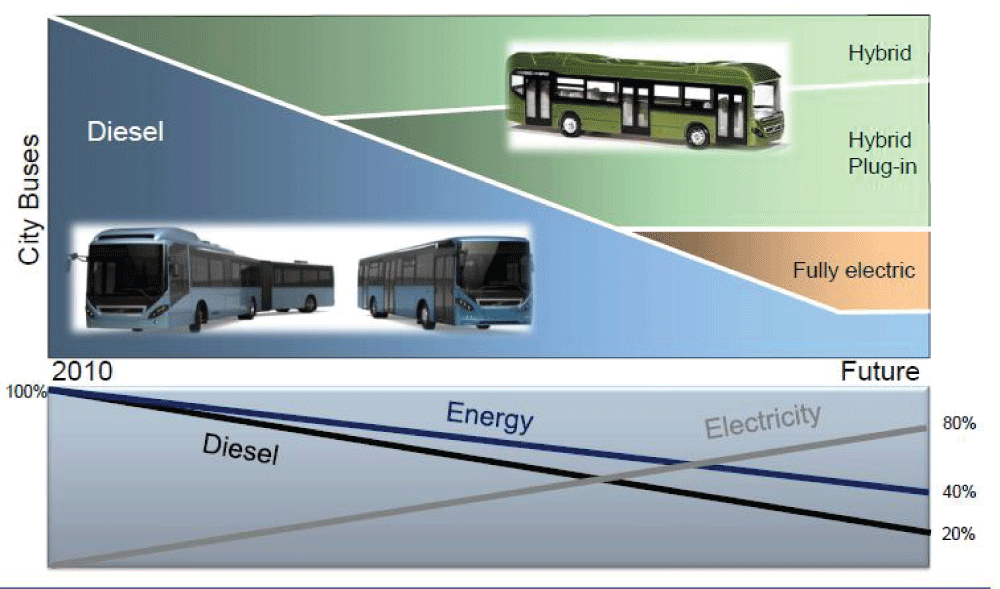 28]. " /> Figure 4: Global trend of BRT manufacturing and usage. Source: INFRAS, New Energy Buses in European Cities, Martin Schmied [].
28]. " /> Figure 4: Global trend of BRT manufacturing and usage. Source: INFRAS, New Energy Buses in European Cities, Martin Schmied []. In the discus of the impacts of the education level of proprietors and their business efficiency and service delivery, studies have revealed that higher skill acquisition is of major significance in advancement and the general economy. For instance, the study conducted by Ajibefun and Daramola [] in Nigeria among the micro-enterprises using 180 sample sizes including the motor mechanic revealed that there is a great gap between the observed and the expected in-service delivery
When it comes to the evaluation of motor mechanics in Nigerian cities, in many instances, simple faults have proven very difficult to fix by the supposed automobile experts and technicians. Some car owners have to resort to multinational workshops like Peugeot, Toyota, Honda, Kia Motors, etc for repairs after repeated visits to the local auto workshops. The fact that the multinational workshops are expensive and inaccessible to the general masses, the majority has continued to have more and more vehicles abandoned by their owners Most of these artisans learn their trade with old model manual vehicles and lack exposure to modern sensor-based hybrid vehicles. They do not also have support for more advanced skill acquisition in their trade, hence, their poor service delivery to their customers. In fact, in an effort to solve some reported problems on those vehicles, they end up introducing more complicated new problems due to poor diagnostic tools [].
The unfortunate situation is that uncountable skilled, semi-skill and even apprentice focused more on financial rewards for service not well delivered instead of perfecting the trade. Some truncate their apprenticeship period to establish their own workshop to become quacks and corrupt, using their patronizers’ vehicles as guess experiments without ramous.
The question is, how sustainable is the continuous dependence on expert rates that will never transfer technology is. Developing countries like Nigeria should as a policy invest in the training and regulation of major artisans like automobile technicians if BRT schemes across the nation will be sustained in this digital age.
Support for entrepreneurship
The fact that no nation can develop beyond its Research and Development (R&D) investment is long established. Many advanced countries of the world do attract talented individuals into their national sectoral development programmes as in Dubai, America, and Asia. African countries need to seek, attract, and retain talent and promote entrepreneurship, such as ‘science or technology parks, industrial parks and business incubators, and innovation villages’. For instance, in Latin America, the city of Guatemala has the Intecap ICT Centre (Guatemala Technology Campus), and the Technopark in the Mexican city of Colima. The challenging issue is ‘when countries like Nigeria and warring African countries will be free from brain drain syndrome’
Cities in Europe have good examples of innovative business parks such as the Barcelona Nord Technology Park, the 22@Barcelona project, the Biomedical Research Park, the Industrial Free Zone, and the Glòries Business Incubator. Bilbao is another city with business areas like the Technological Park of Bizkaia and the Science Park of the University of the Basque Other countries have also sought to develop flagship projects in an effort to seek international recognition []. Development of entrepreneurship is very low in African countries, thereby creating over-dependency on the central government (Figure 6).
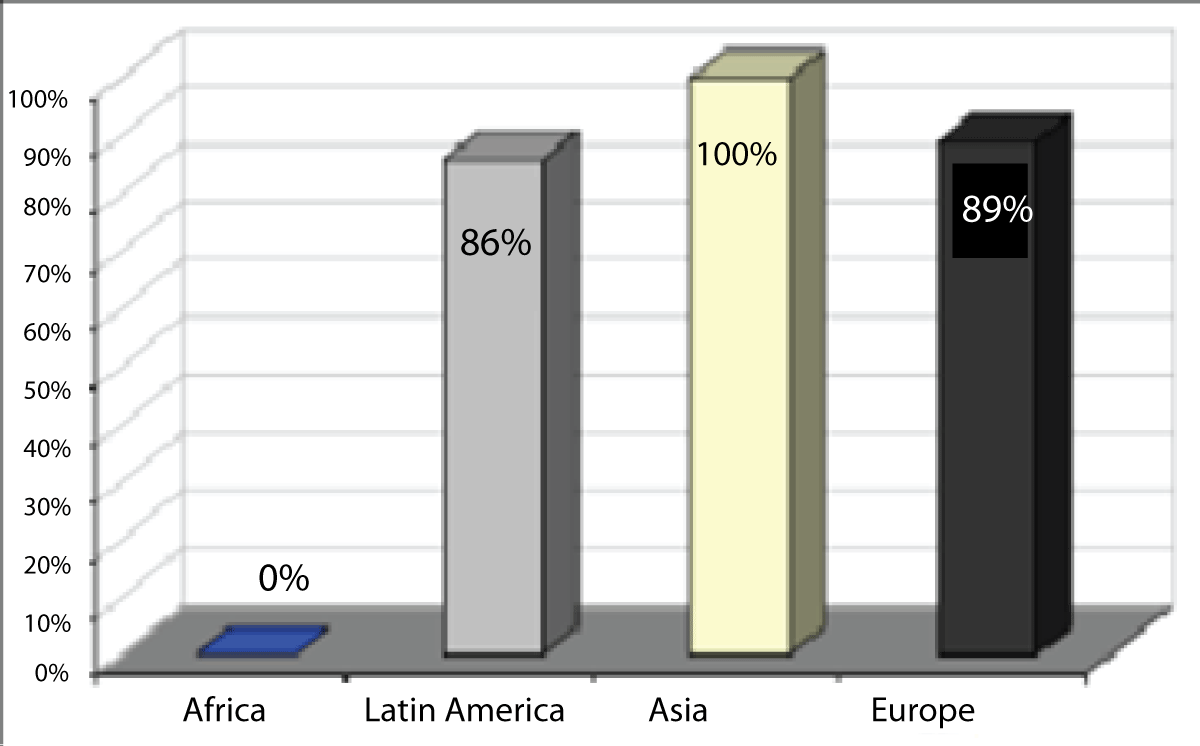 14]." /> Figure 6: Regions with action plans to support entrepreneurship. Source: The Committee of Digital and Knowledge‐based Cities of UCLG. Smart City Study [].
14]." /> Figure 6: Regions with action plans to support entrepreneurship. Source: The Committee of Digital and Knowledge‐based Cities of UCLG. Smart City Study [].Action plan to retain and attract talents and creativity
Africa region is still lagging behind in such policy implementation. Most African cities are continuously experiencing brain drain due to socio-economic policies. Many Africans in diasporas are heading major innovative technological projects and thereby contributing greatly to the development of their host countries. African leaders seem to be paying lip service to a technological enabling environment that can retain talents and creativity as revealed in Figure 7.
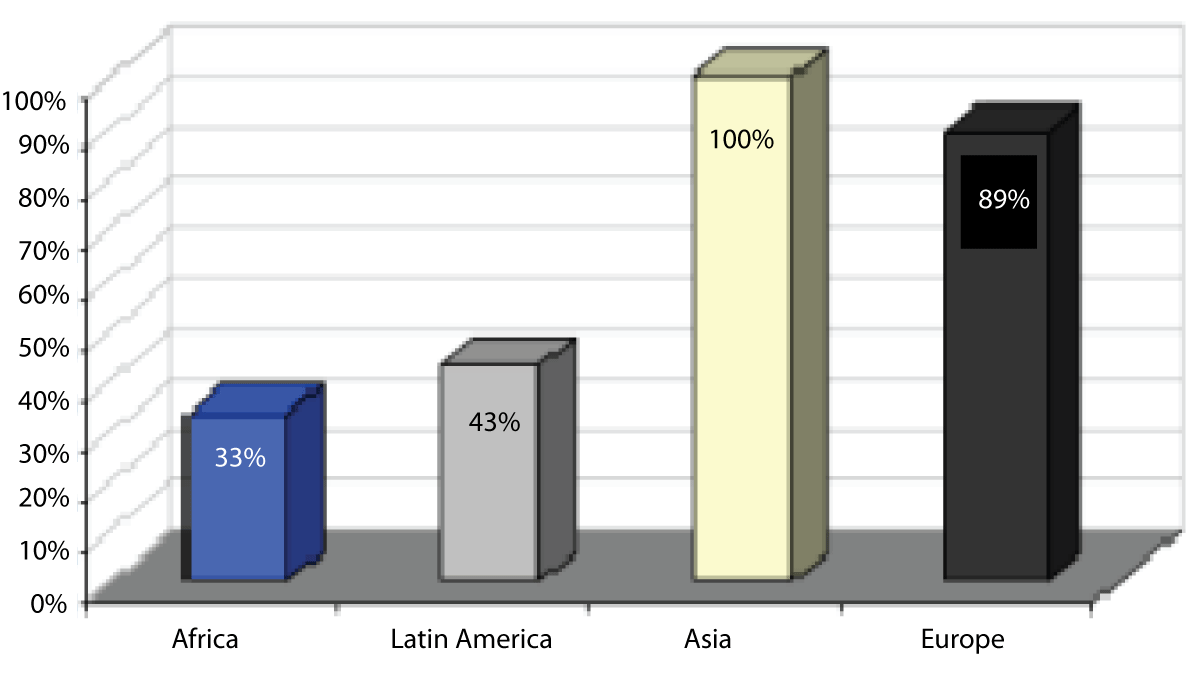 14]." /> Figure 7: Regions that implement actions to attract and retain talents and creativity. Source: The Committee of Digital and Knowledge‐based Cities of UCLG. Smart City Study [].
14]." /> Figure 7: Regions that implement actions to attract and retain talents and creativity. Source: The Committee of Digital and Knowledge‐based Cities of UCLG. Smart City Study [].Smart people for HBRT
Digital city with HBRT is more of the city’s infrastructure components and operation that is IT based. But smart city revolves around peoples’ digital friendliness which also depends on their educational levels and exposure to the outside world. A well-educated citizen who is enhanced by the presence of higher educational institutes that adapt the local setting with global technological innovation tends to grow the society and equip them with the required capacity to be smart in interaction. The evaluation of African countries using the smart city parameters reveals that no African cities can be classified as smart in terms of people and infrastructure e-compliance. Since technological innovations are advancing, African countries cannot afford to be spectators as they are dumping grounds for the out-model means of mobility, There must be deliberate efforts by the government at all levels to create enabling training opportunities for the motor mechanics and other artisans in to keep the continent buoyant.
R&D and Infrastructure
Smart city status attainment is a function of a nation’s policy on Research, Development, and Investment (R&D&I). The political ideology of the ruling government tends to influence the infrastructural development and the support for emerging sectors. Leadership political ideology plays a major role in policy implementation and technological advancement of a nation as leaders must be visionary of where the country wants to be. A demobilized nation is synonymous with a backward nation that cannot be smart in all its functionality as it lacks efficiency.
The way forward for sustainable hybrid BRT in African countries
A nation’s mobility system can be said to be sustainable when the emphasis on policy formation and implementation is more in terms of its environmental friendliness, and efficiency in the cost-benefit analysis of its externalities []. Hence, the green mobility crusade is the intersection of mobility, sustainability, and socio-economic systems as illustrated in Figure 8.
A sustainable transportation system therefore is a system where the levels of its negative externalities do not exceed the tolerances capacity of the environment according to Daly []. It should be noted that all the innovations in the transport sector (green mobility, hybrid vehicles, ITS) are geared toward environmental sustainability. In fact, pollution is the greatest impact of urban transportation on the environment that must be properly mitigated [].
Deen and Skinner [] in considering the process definition aspect of the transport system define it as a system that modifies or adapts the operational system to expected population changes, growth in economic activities, and changes in resource availability while still meeting the environmental standards. Akinyemi and Zuidgeest [] viewed it as a system that meets people’s needs in terms of mobility, accessibility, and safety within the available financial, environmental, and social resources [-].
Conclusion
Green urban mobility and sustainable energy crusades are intertwined when it comes to innovative research and environmental policy formation and implementation that is backed up with the required funding. The standardization of the global automobile industry requires the adoption of ITS which revolved around current road infrastructural development and human capacity. These must be consciously planned and implemented without lip service as revealed in most African countries that lack patriotic leadership. This work therefore will buttress the fact that; for African countries be to committed to the climate action plans under the Paris Agreement known as Nationally Determined Contributions (NDCs) to be put forward by 2025, there must be a paradigm shift in their urban mobility operation, management and capacity development to cope with global mobility trend..
Recommendation
The Auto mechanics and allied artisans should be subjected to short-term Certificate of Professional Competence (CPC) Programmes with scheduled Continuing Professional Development (CPD) programmes nationwide in response to global innovation dynamics in automobiles for sustainable HBRT
Organised Auto Dealers and manufacturers like Innosen in Aba should be compelled by regulation to train Mechanics/Technicians as Accredited Independent Service Providers (AISP)
African road transport policymakers should as a matter of priority focus on infrastructures that are compatible with modern HBRT/ITS operations if they are truly looking for sustainable urban mobility.
There should be a Memorandum of Understanding (MoU) between concerned government agencies and the Mechanics/Technicians for easier access to finance and equipment importation that will enhance their efficiency in service delivery.
Understanding and Responding to Climate Change. 2009. (http://www.ethanolrfa.org/industry/statistics/#)
United Nations.World urbanization prospects: the 2007 revision, CD-ROM edition.UN department of economic and social affairs, population division. New York.
Wilbanks T, Romero LP, Bao M, Berkhout F, Cairncross S, Ceron JP, Kapshe M, Muir-Wood R, Zapata-Marti R. Industry, settlement and society. In: Parry M, Canziani O, Palutikof J, van der Linden P, Hanson C, eds. Climate change impacts, adaptation and vulnerability. Cambridge, UK: Cambridge University Press; 2007. p. 357-390.
Stott PA, Tett SFB, Jones GS, Allen MR, Ingram WJ, Mitchell JF. Attribution of twentieth century temperature change to natural and anthropogenic causes. Clim Dyn. 2004; 17:1-21.
The Physical Science Basis: Contribution of Working Group I to the Fourth Assessment Report of the Intergovernmental Panel on Climate Change. In: Solomon S, Qin D, Manning M, Chen Z, Marquis M, Averyt KB, Tignor M, Miller HL, eds. Cambridge University Press, Cambridge, United Kingdom, and New York; 2007.
Hoerling M, Eischeid J, Quan X, Xu T. Explaining the record U.S. warmth of 2006. Geophys Res Lett. 2007; 34. doi:10.1029/2007GL030343
National Research Council (NRC). Climate change science: an analysis of some key questions. National Academy Press, Washington, D.C.; 2001.
Commission of the European Communities. European Transport Policy for 2010: Time to Decide, White Paper. COM 370, Brussels; 2001.
Dukiya JJ. Energy Shortage, Climate Change and the Challenge of Intelligent Transport System (ITS) in African Countries. Int J Humanities Social Sci. 2013; 3(14):114-120. https://citeseerx.ist.psu.edu/viewdoc/download?doi=10.1.1.1077.5783&rep=rep1&type=pdf
Transitions to alternative transportation technologies—A focus on hydrogen. http://www.nap.edu/catalog/12222.html; 2008.
Evolution of the Motor Vehicle. https://www.cartakeback.com/blog/just-for-fun/evolution-of-the-motor-vehicle/; 2018.
Nieuwenhuijsen MJ, Khreis H. Car free cities: pathway to healthy urban living. Environ Int. 2016; 94:251-262.
Giffinger R, Fertner C, Kramar H, Kalasek R, Pichler-Milanovic N, Meijers E. Smart Cities – Ranking of European Medium-Sized Cities, Research Report, Vienna University of Technology, Vienna, Austria; 2007.
Smart City Study. International study of the situation of ICT, Innovation and Knowledge in Cities. Committee of Digital and Knowledge-based Cities of UCLG; 2012.
Volvo BRT: Solving tomorrow's mass transit challenges today. https://wikibus.blob.core.windows.net/sources14/Volvo%20BRT-%20Solving%20tomorrow's%20mass%20transit%20challenges%20today.pdf; 2022.
Ghanbari-Ghajarloo H, Masih-Tehrani M, Kheybari M. Design and energy optimisation of a hybrid flywheel bus rapid transit. Int J Hydromechatronics. 2020; (1):88-106. doi:10.1504/ijhm.2020.105500.
John N. Technology & transportation: The dynamic relationship. Discovery Institute. 2001;10(2). www.discovery.org.
Yusuf A, Ikechiji. Nigeria has only one helicopter for search and rescue. http://thenationonlineng.com/dynamicpage.asp?id=51265; 2008.
Evaluating progress of the U.S. climate change science program: methods and preliminary results. National Academies Press, Washington, D.C.; 2007.
International Energy Authority (IEA). Biofuels for transport: an international perspective. Paris, France. Available at: www.iea.org/textbase/nppdf/free/2004/biofuels2004.pdf; 2004.
Gregory D. Recent State Actions Promoting Alternative Energy. NGA Centre for Best Practices, issue brief, Environment, Energy & Natural Resources Division, Washington DC. Available at: www.nga.org/center; 2007.
Global BRT Data. Worldwide and Key Indicators per Region. 2019. http://brtdata.org/.
Amit V, Ravinder K, Shashank S. Major Principles of Sustainable Transport System: A Literature Review. International Journal for Research in Applied Science & Engineering Technology (IJRASET). 2018; 6(2). www.ijraset.com.
Jean L. Fossil fuels: what future. A paper presented at Beijing workshop on global dialogue on energy security, 16-17 October. The Dialogue International Policy Institute, China Institute of International Studies; 2006.
Q&As: Red light cameras. Insurance institute for highway safety. December, 2010. http://www.iihs.org/research/qanda/rlr.html.
Philippe C. Hybrid Diesel-Electric Buses Coming To Chicago and MTA Rolls Out 60’ Hybrid Buses in Time for Preakness. www.mta.maryland.gov; 2012, 2013.
Sukarno I, Matsumoto H, Susanti L. Transportation energy consumption and emissions-a view from city of Indonesia. Future Cities Environ. 2016; 2:6.
INFRAS, New Energy Buses in European Cities, Martin Schmied. 2015. Available at: https://transition-china.org/wp-content/uploads/2021/02/70-Evaluation-of-New-Energy-Buses-in-European-Cities_Martin-Schmied_EN.pdf
Ajibefun IA, Daramola AG. Determinants of technical and allocative efficiency of micro‐enterprises: firm‐level evidence from Nigeria. African Development Review. 2003; 15(2-3):353-395. doi:10.1111/j.1467-8268.2003.00077.x
National Bureau of Statistics. Facts and figures 2007. The Federal Republic of Nigeria. Available at: http://www.nigerianstat.gov.ng/fact2007.zip; 2008.
Zuidgeest MHP, van Maarseveen MFAM. Transportation planning for sustainable development. Proceedings of South-African transportation conference, Pretoria, South-Africa; 2000.
Daly HE. Ecological economics and sustainable development: from concept to policy (No. 1991). World Bank, Environment Department, Policy and Research Division; 1991.
Ogunsanya AA. Analysis of Nigerian government policy on urban transportation. Nigerian Institute of Transport Technology (INTT), Zaria; 2004. 2003-223.
Deen TB, Skinner RE. A paradigm for addressing change in the transportation environment. Transportation Research News. 1994; 174:11-13.
Akinyemi EO, Zuidgeest MHP. Sustainable development & transportation: past experiences and future challenges. World Transport Policy & Practice. 2000; 6(1):31-39. Available at: http://www.ecoplan.com/wtpp.
Brazil to build 'Biofuel Town' in Nigeria to kick-start bio energy industry. Available at: http://biopact.com/2007/05/brazil-to-build-biofuel-city-in-nigeria.html; 2007.
Agrofuels: towards a reality check in nine key areas. Available at: http://www.corporateeurope.org/docs/AgrofuelsRealityCheck.pdf; 2007.
Commission of the European Communities. Keep Europe moving – Sustainable mobility for our continent, Mid-term review of the European Commission’s 2001 Transport White Paper. Communication from the Commission to the Council and the European Parliament. Brussels. Science and Technology for Sustainability Program Policy and Global Affairs; Summary of a Workshop. Available at: http://www.nap.edu/catalog/12806.html; 2006.
Biofuels for Africa: An illusion or a sustainable option to reduce energy vulnerability and alleviate poverty. Available at: http://www.endaenergy.org; 2007.
EU eCall. EU adopts automobile emergency calling service eCall. Telecom Paper. 2011, September 8. Available at: http://ec.europa.eu/ecall/.
FRSC-and-new-number-plate. http://www.businessdayonline.com/NG/index.php/analysis/commentary/28695-; 2011.
Food and Agriculture Organization (FAO). Special report: markets, prices, food situation and prospects for Benin, Niger and Nigeria. Available at: http://www.fao.org/docrep/010/ai464e/ai464e00.htm; 2008.
Food and Agriculture Organization (FAO). Unified Bioenergy Terminology (UBET). ftp://ftp.fao.org/docrep/fao/007/j4504e/j4504e00.pdf; 2004.
The Scientific Basis. Contribution of Working Group I to the Third Assessment Report of the Intergovernmental Panel on Climate Change. In: Houghton JT, Ding Y, Griggs DJ, Noguer M, Van der Linden PJ, Dai X, Maskell K, Johnson CA, eds. Cambridge University Press, Cambridge, United Kingdom, and New York; 2001.
Inter-American Development Bank (IADB). The global biofuels outlook. Available at: http://www.iadb.org/biofuels/; 2007.
Karl TR, Trenberth KE. Modern climate change. Science. 2003; 302(5651):1719–1723.
Lum KM, Wong YD. A before-and-after study on red light camera installation. ITE Journal (Institute of Transportation Engineers). 2003; 73(3):28–32.
NHTSA Vehicle safety and fuel economy rulemaking and research priority plan, 2011–2013. Available at: http://www.nhtsa.gov/staticfiles/rulemaking/pdf/2011-2013_Vehicle_Safety-Fuel_Economy_Rulemaking-Research_Priority_Plan.pdf.
Osondu E. NNPC Begins Biomass Ethanol Project Feasibility Study. Thisday online. July 5. Available at: www.thisdayonline.com/nview.php?id=77461; 2007.
Osterkorn M. Ethanol in Africa: Nigeria will use Brazilian blueprint to found its new biofuels industry. Available at: www.ecoworld.com/home/articles2.cfm?tid=389; 2006.
Retting RA, Ferguson SA, Hakkert AS. Effects of red light cameras on violations and crashes: A review of the international literature. Traffic Injury Prevention. 2003; 4(1):17–23.
Mandate framework document for the South African coal roadmap, final version. Available at: www.sacrm-mandat.pdf; 2008.
Stott PA, Stone DA, Allen MR. Human Contribution to the European heat wave of 2003. Nature. 2004; 432:610–614.
UNEP/NEPAD. Action plan of the environment initiative of NEPAD. UNEP, Nairobi. Sustainable transport: priorities for policy reform. Development in practice series, The World Bank, Washington, USA. USDOT. ITS Strategic Research Plan, 2010–2014. Available at: http://www.its.dot.gov/strat_plan/index.htm.
United States Patent and Trademark Office. Emergency vehicle traffic signal preemption system. Available at: http://patft.uspto.gov/netacgi/nph-Parser?patentnumber=6326903; 2011.
JJ D. Smart Mobility and Sensor Based-BRT Crusade, the Challenge for Auto Mechanics and Technicians in Africa. IgMin Res. Jun 14, 2024; 2(6): 432-439. IgMin ID: igmin198; DOI:10.61927/igmin198; Available at: igmin.link/p198
次のリンクを共有した人は、このコンテンツを読むことができます:
Address Correspondence:
Dukiya JJ. Department of Transport Management Technology, Federal University of Technology, Minna, Nigeria, Email: [email protected]; [email protected]
How to cite this article:
JJ D. Smart Mobility and Sensor Based-BRT Crusade, the Challenge for Auto Mechanics and Technicians in Africa. IgMin Res. Jun 14, 2024; 2(6): 432-439. IgMin ID: igmin198; DOI:10.61927/igmin198; Available at: igmin.link/p198
Copyright: © 2024 Dukiya JJ. This is an open access article distributed under the Creative Commons Attribution License, which permits unrestricted use, distribution, and reproduction in any medium, provided the original work is properly cited.
![Traffic gridlock in Nigeria Source: Dukiya [9].](https://www.igminresearch.jp/articles/figures/igmin198/igmin198.g001.png) Figure 1: Traffic gridlock in Nigeria Source: Dukiya [9]....
Figure 1: Traffic gridlock in Nigeria Source: Dukiya [9]....
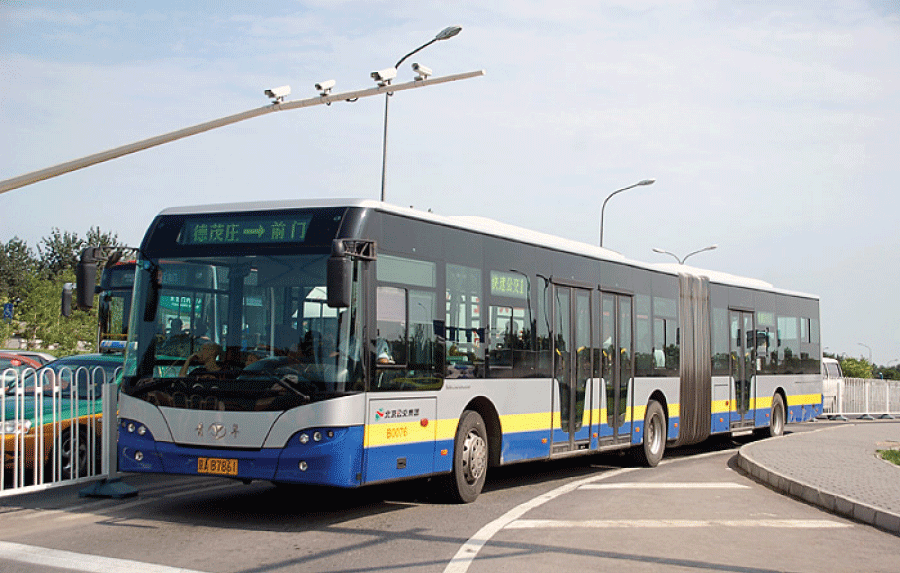 Figure 2: three-door BRT. Source: US Department of Transport...
Figure 2: three-door BRT. Source: US Department of Transport...
![Comparison of high-capacity buses in relation to environmental friendliness and energy consumption. Source: Volvo BRT [15].](https://www.igminresearch.jp/articles/figures/igmin198/igmin198.g003.png) Figure 3: Comparison of high-capacity buses in relation to e...
Figure 3: Comparison of high-capacity buses in relation to e...
![Global trend of BRT manufacturing and usage. Source: INFRAS, New Energy Buses in European Cities, Martin Schmied [28].](https://www.igminresearch.jp/articles/figures/igmin198/igmin198.g004.png) Figure 4: Global trend of BRT manufacturing and usage. Sourc...
Figure 4: Global trend of BRT manufacturing and usage. Sourc...
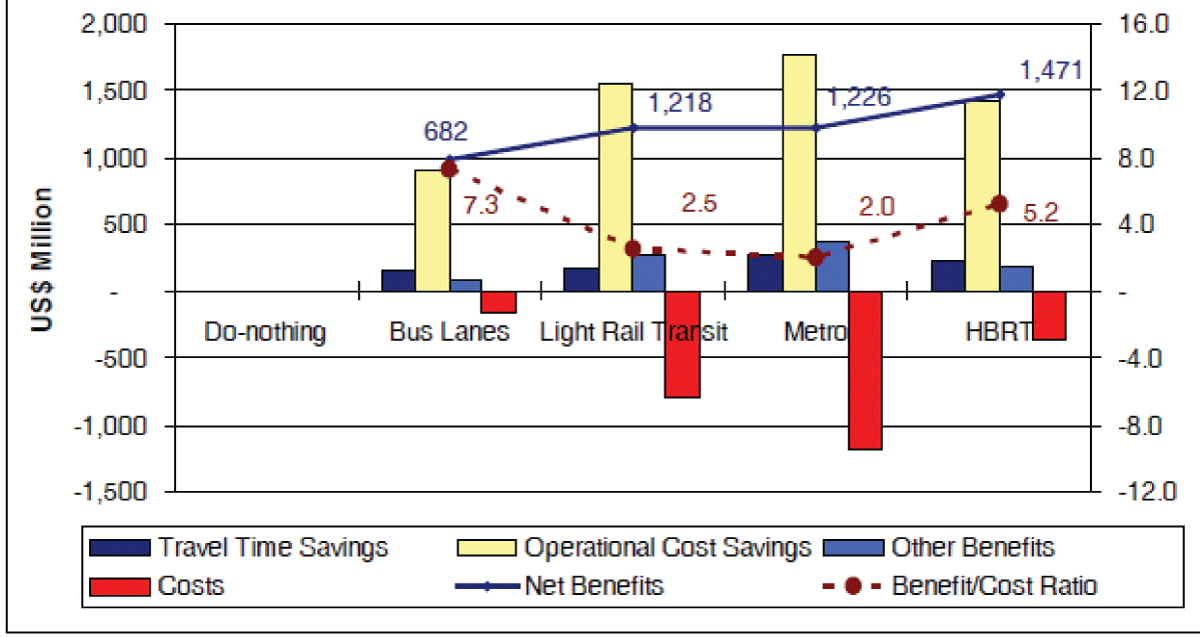 Figure 5: Comparative analysis of HBRT in relation to other ...
Figure 5: Comparative analysis of HBRT in relation to other ...
![Regions with action plans to support entrepreneurship. Source: The Committee of Digital and Knowledge‐based Cities of UCLG. Smart City Study [14].](https://www.igminresearch.jp/articles/figures/igmin198/igmin198.g006.png) Figure 6: Regions with action plans to support entrepreneurs...
Figure 6: Regions with action plans to support entrepreneurs...
![Regions that implement actions to attract and retain talents and creativity. Source: The Committee of Digital and Knowledge‐based Cities of UCLG. Smart City Study [14].](https://www.igminresearch.jp/articles/figures/igmin198/igmin198.g007.png) Figure 7: Regions that implement actions to attract and reta...
Figure 7: Regions that implement actions to attract and reta...
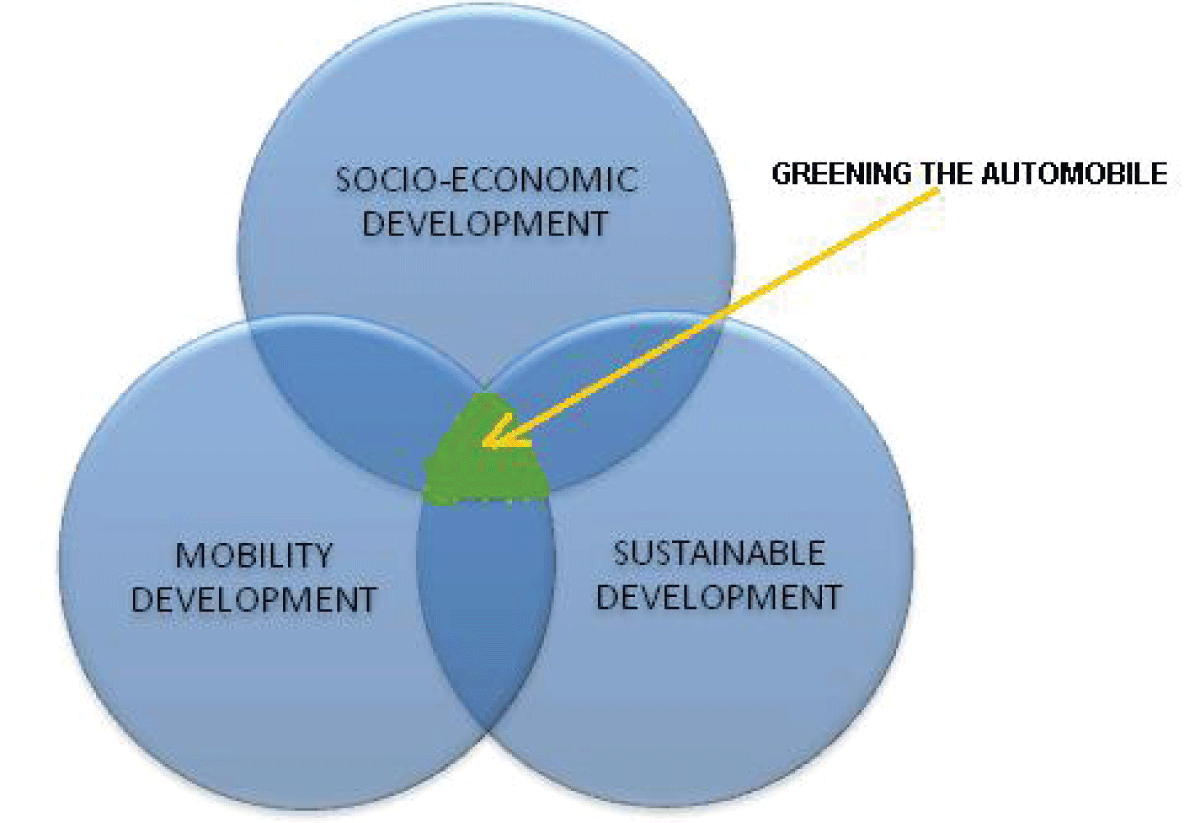 Figure 8: Sustainability assessment of the transport sector ...
Figure 8: Sustainability assessment of the transport sector ...
Understanding and Responding to Climate Change. 2009. (http://www.ethanolrfa.org/industry/statistics/#)
United Nations.World urbanization prospects: the 2007 revision, CD-ROM edition.UN department of economic and social affairs, population division. New York.
Wilbanks T, Romero LP, Bao M, Berkhout F, Cairncross S, Ceron JP, Kapshe M, Muir-Wood R, Zapata-Marti R. Industry, settlement and society. In: Parry M, Canziani O, Palutikof J, van der Linden P, Hanson C, eds. Climate change impacts, adaptation and vulnerability. Cambridge, UK: Cambridge University Press; 2007. p. 357-390.
Stott PA, Tett SFB, Jones GS, Allen MR, Ingram WJ, Mitchell JF. Attribution of twentieth century temperature change to natural and anthropogenic causes. Clim Dyn. 2004; 17:1-21.
The Physical Science Basis: Contribution of Working Group I to the Fourth Assessment Report of the Intergovernmental Panel on Climate Change. In: Solomon S, Qin D, Manning M, Chen Z, Marquis M, Averyt KB, Tignor M, Miller HL, eds. Cambridge University Press, Cambridge, United Kingdom, and New York; 2007.
Hoerling M, Eischeid J, Quan X, Xu T. Explaining the record U.S. warmth of 2006. Geophys Res Lett. 2007; 34. doi:10.1029/2007GL030343
National Research Council (NRC). Climate change science: an analysis of some key questions. National Academy Press, Washington, D.C.; 2001.
Commission of the European Communities. European Transport Policy for 2010: Time to Decide, White Paper. COM 370, Brussels; 2001.
Dukiya JJ. Energy Shortage, Climate Change and the Challenge of Intelligent Transport System (ITS) in African Countries. Int J Humanities Social Sci. 2013; 3(14):114-120. https://citeseerx.ist.psu.edu/viewdoc/download?doi=10.1.1.1077.5783&rep=rep1&type=pdf
Transitions to alternative transportation technologies—A focus on hydrogen. http://www.nap.edu/catalog/12222.html; 2008.
Evolution of the Motor Vehicle. https://www.cartakeback.com/blog/just-for-fun/evolution-of-the-motor-vehicle/; 2018.
Nieuwenhuijsen MJ, Khreis H. Car free cities: pathway to healthy urban living. Environ Int. 2016; 94:251-262.
Giffinger R, Fertner C, Kramar H, Kalasek R, Pichler-Milanovic N, Meijers E. Smart Cities – Ranking of European Medium-Sized Cities, Research Report, Vienna University of Technology, Vienna, Austria; 2007.
Smart City Study. International study of the situation of ICT, Innovation and Knowledge in Cities. Committee of Digital and Knowledge-based Cities of UCLG; 2012.
Volvo BRT: Solving tomorrow's mass transit challenges today. https://wikibus.blob.core.windows.net/sources14/Volvo%20BRT-%20Solving%20tomorrow's%20mass%20transit%20challenges%20today.pdf; 2022.
Ghanbari-Ghajarloo H, Masih-Tehrani M, Kheybari M. Design and energy optimisation of a hybrid flywheel bus rapid transit. Int J Hydromechatronics. 2020; (1):88-106. doi:10.1504/ijhm.2020.105500.
John N. Technology & transportation: The dynamic relationship. Discovery Institute. 2001;10(2). www.discovery.org.
Yusuf A, Ikechiji. Nigeria has only one helicopter for search and rescue. http://thenationonlineng.com/dynamicpage.asp?id=51265; 2008.
Evaluating progress of the U.S. climate change science program: methods and preliminary results. National Academies Press, Washington, D.C.; 2007.
International Energy Authority (IEA). Biofuels for transport: an international perspective. Paris, France. Available at: www.iea.org/textbase/nppdf/free/2004/biofuels2004.pdf; 2004.
Gregory D. Recent State Actions Promoting Alternative Energy. NGA Centre for Best Practices, issue brief, Environment, Energy & Natural Resources Division, Washington DC. Available at: www.nga.org/center; 2007.
Global BRT Data. Worldwide and Key Indicators per Region. 2019. http://brtdata.org/.
Amit V, Ravinder K, Shashank S. Major Principles of Sustainable Transport System: A Literature Review. International Journal for Research in Applied Science & Engineering Technology (IJRASET). 2018; 6(2). www.ijraset.com.
Jean L. Fossil fuels: what future. A paper presented at Beijing workshop on global dialogue on energy security, 16-17 October. The Dialogue International Policy Institute, China Institute of International Studies; 2006.
Q&As: Red light cameras. Insurance institute for highway safety. December, 2010. http://www.iihs.org/research/qanda/rlr.html.
Philippe C. Hybrid Diesel-Electric Buses Coming To Chicago and MTA Rolls Out 60’ Hybrid Buses in Time for Preakness. www.mta.maryland.gov; 2012, 2013.
Sukarno I, Matsumoto H, Susanti L. Transportation energy consumption and emissions-a view from city of Indonesia. Future Cities Environ. 2016; 2:6.
INFRAS, New Energy Buses in European Cities, Martin Schmied. 2015. Available at: https://transition-china.org/wp-content/uploads/2021/02/70-Evaluation-of-New-Energy-Buses-in-European-Cities_Martin-Schmied_EN.pdf
Ajibefun IA, Daramola AG. Determinants of technical and allocative efficiency of micro‐enterprises: firm‐level evidence from Nigeria. African Development Review. 2003; 15(2-3):353-395. doi:10.1111/j.1467-8268.2003.00077.x
National Bureau of Statistics. Facts and figures 2007. The Federal Republic of Nigeria. Available at: http://www.nigerianstat.gov.ng/fact2007.zip; 2008.
Zuidgeest MHP, van Maarseveen MFAM. Transportation planning for sustainable development. Proceedings of South-African transportation conference, Pretoria, South-Africa; 2000.
Daly HE. Ecological economics and sustainable development: from concept to policy (No. 1991). World Bank, Environment Department, Policy and Research Division; 1991.
Ogunsanya AA. Analysis of Nigerian government policy on urban transportation. Nigerian Institute of Transport Technology (INTT), Zaria; 2004. 2003-223.
Deen TB, Skinner RE. A paradigm for addressing change in the transportation environment. Transportation Research News. 1994; 174:11-13.
Akinyemi EO, Zuidgeest MHP. Sustainable development & transportation: past experiences and future challenges. World Transport Policy & Practice. 2000; 6(1):31-39. Available at: http://www.ecoplan.com/wtpp.
Brazil to build 'Biofuel Town' in Nigeria to kick-start bio energy industry. Available at: http://biopact.com/2007/05/brazil-to-build-biofuel-city-in-nigeria.html; 2007.
Agrofuels: towards a reality check in nine key areas. Available at: http://www.corporateeurope.org/docs/AgrofuelsRealityCheck.pdf; 2007.
Commission of the European Communities. Keep Europe moving – Sustainable mobility for our continent, Mid-term review of the European Commission’s 2001 Transport White Paper. Communication from the Commission to the Council and the European Parliament. Brussels. Science and Technology for Sustainability Program Policy and Global Affairs; Summary of a Workshop. Available at: http://www.nap.edu/catalog/12806.html; 2006.
Biofuels for Africa: An illusion or a sustainable option to reduce energy vulnerability and alleviate poverty. Available at: http://www.endaenergy.org; 2007.
EU eCall. EU adopts automobile emergency calling service eCall. Telecom Paper. 2011, September 8. Available at: http://ec.europa.eu/ecall/.
FRSC-and-new-number-plate. http://www.businessdayonline.com/NG/index.php/analysis/commentary/28695-; 2011.
Food and Agriculture Organization (FAO). Special report: markets, prices, food situation and prospects for Benin, Niger and Nigeria. Available at: http://www.fao.org/docrep/010/ai464e/ai464e00.htm; 2008.
Food and Agriculture Organization (FAO). Unified Bioenergy Terminology (UBET). ftp://ftp.fao.org/docrep/fao/007/j4504e/j4504e00.pdf; 2004.
The Scientific Basis. Contribution of Working Group I to the Third Assessment Report of the Intergovernmental Panel on Climate Change. In: Houghton JT, Ding Y, Griggs DJ, Noguer M, Van der Linden PJ, Dai X, Maskell K, Johnson CA, eds. Cambridge University Press, Cambridge, United Kingdom, and New York; 2001.
Inter-American Development Bank (IADB). The global biofuels outlook. Available at: http://www.iadb.org/biofuels/; 2007.
Karl TR, Trenberth KE. Modern climate change. Science. 2003; 302(5651):1719–1723.
Lum KM, Wong YD. A before-and-after study on red light camera installation. ITE Journal (Institute of Transportation Engineers). 2003; 73(3):28–32.
NHTSA Vehicle safety and fuel economy rulemaking and research priority plan, 2011–2013. Available at: http://www.nhtsa.gov/staticfiles/rulemaking/pdf/2011-2013_Vehicle_Safety-Fuel_Economy_Rulemaking-Research_Priority_Plan.pdf.
Osondu E. NNPC Begins Biomass Ethanol Project Feasibility Study. Thisday online. July 5. Available at: www.thisdayonline.com/nview.php?id=77461; 2007.
Osterkorn M. Ethanol in Africa: Nigeria will use Brazilian blueprint to found its new biofuels industry. Available at: www.ecoworld.com/home/articles2.cfm?tid=389; 2006.
Retting RA, Ferguson SA, Hakkert AS. Effects of red light cameras on violations and crashes: A review of the international literature. Traffic Injury Prevention. 2003; 4(1):17–23.
Mandate framework document for the South African coal roadmap, final version. Available at: www.sacrm-mandat.pdf; 2008.
Stott PA, Stone DA, Allen MR. Human Contribution to the European heat wave of 2003. Nature. 2004; 432:610–614.
UNEP/NEPAD. Action plan of the environment initiative of NEPAD. UNEP, Nairobi. Sustainable transport: priorities for policy reform. Development in practice series, The World Bank, Washington, USA. USDOT. ITS Strategic Research Plan, 2010–2014. Available at: http://www.its.dot.gov/strat_plan/index.htm.
United States Patent and Trademark Office. Emergency vehicle traffic signal preemption system. Available at: http://patft.uspto.gov/netacgi/nph-Parser?patentnumber=6326903; 2011.